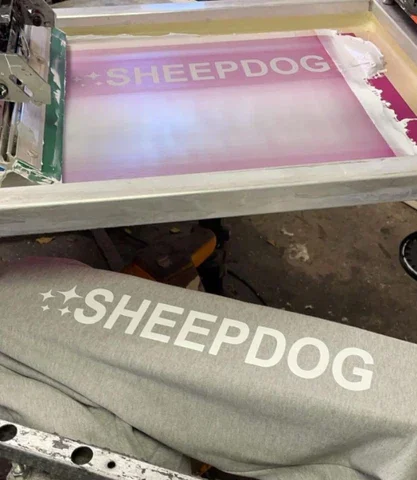Everything You Need To Know About Screen Printing
WHAT IS SCREEN PRINTING?
Screen Printing, also known as Silk Screening, is a way of printing images on t-shirts that uses thick inks that lay on top of the shirt rather of soaking into it.
The most simple approach is making a stencil on a fine mesh screen and then forcing ink (or paint, in the case of artwork and posters) through it to imprint your pattern on the surface underneath.
The process is sometimes called ‘silk screening’ or ‘silk screen printing.
WHY IS SCREEN PRINTING USED?
The fact that screen printing generates vibrant colors even on darker textiles is one of the reasons why it is so popular. The ink or paint is also layered on the cloth or paper’s surface, giving the print an appealing tactile character.
How Does Screen Printing or Silk Screening work?
The Screen Printing Process
First, The printer must choose the appropriate mesh screen based on the design’s stylistics and the texture of the textiles being utilized. The light-reactive emulsion is then applied on the mesh screen, which will harden as it develops under bright light. The design on an acetate sheet is then put on the emulsion coated mesh and subjected to strong light. This light will solidify the emulsion, leaving any sections of the screen not covered by the pattern in a liquid condition. If the design has more than one color, each color will require its own screen. Each screen will need to be positioned by hand with extreme precision. All sections of the screen that are not covered by the design will go hard when the appropriate time period has passed. Any emulsion that hasn’t solidified must be washed off. This will leave a clear imprint of the pattern on the screen, allowing the ink to pass through easily. After the screen has dried completely, the printer will need to make any necessary adjustments or touch-ups. The stencil has been properly prepared and is now ready to use. After that, the screen will be placed on the printing machine. The shirt is then put below the screen on the printing board. The screen is dropped onto the printing board, and ink is applied to the top. The ink is pulled across the whole length of the screen with a squeegee. The ink is forced through any open regions in the stencil, resulting in the imprinting of the pattern on the product. Finally, The printed garment or object will then be dried in the last stage. The ink will be cured and a smooth finish will be achieved. The finished product is inspected for quality and cleaned to eliminate any lingering residues.

WHICH TYPE OF DESIGNS CAN WORK WITH SCREEN PRINTING?
In order for screen printing to provide excellent results, you will have to consider solid graphics that do not have any small details. This means that it would be a viable option where basic shapes, symbols, geometric designs, and typography is involved. Since making stencils for detailed designs is difficult and time-consuming, you cannot expect much from the method.
Moreover, each color would be applied separately which is why fewer colors can be used. It is quite common for print providers to limit the number of colors used in their designs to 9 and not more when they opt for screen printing.
IS SCREEN PRINTING EVEN ECO-FRIENDLY?
SHOULD YOUR BUSINESS CONSIDER SCREEN PRINTING?
The thing about screen printing is that it can only be cost-effective if you work with designs that feature simple graphics and a few colors. You would also have to spend a ton of money as an upfront investment. Even if you opt for a third-party print service, you would require at least 5 orders. Keep in mind that the overall cost of screen printing in bulk would be based on the screens and the number of colors used. Hence, you will find screen printing to be financially challenging.
Furthermore, ordering garments in bulk would require storage facilities. This would result in piles of clothing lying around at the office or your home. It would limit your ability to get your store off the ground. As selling all the items printed is no easy feat, you are likely to contribute to textile waste. New businesses would struggle to predict printing needs. Some printing companies would ask you to provide print files for each color and ask you to follow their color codes. It is due to this reason that screen printing can be quite difficult to work with.
268 SW 12th AVE
Deerfield Beach, Florida
33442
(954) 997-2268
Sales@deerfieldcustomprints.com
COPYRIGHT © 2025, Deerfield Custom Prints. All Righters Reserved.
